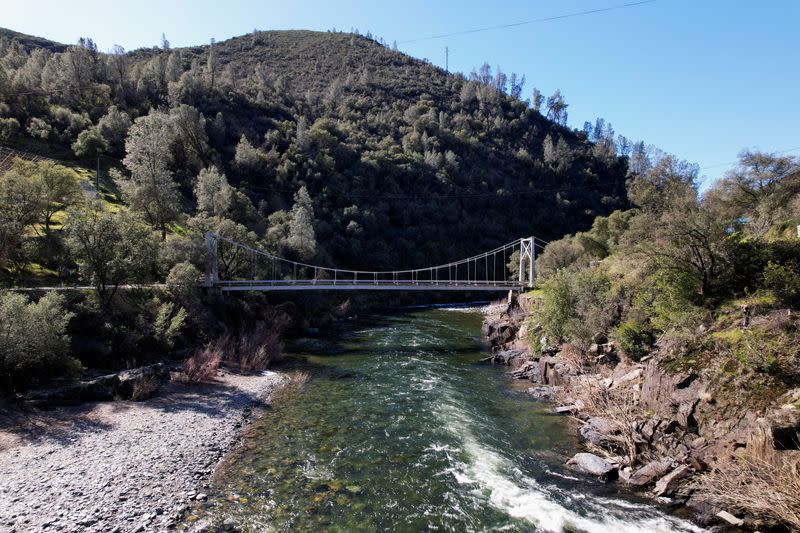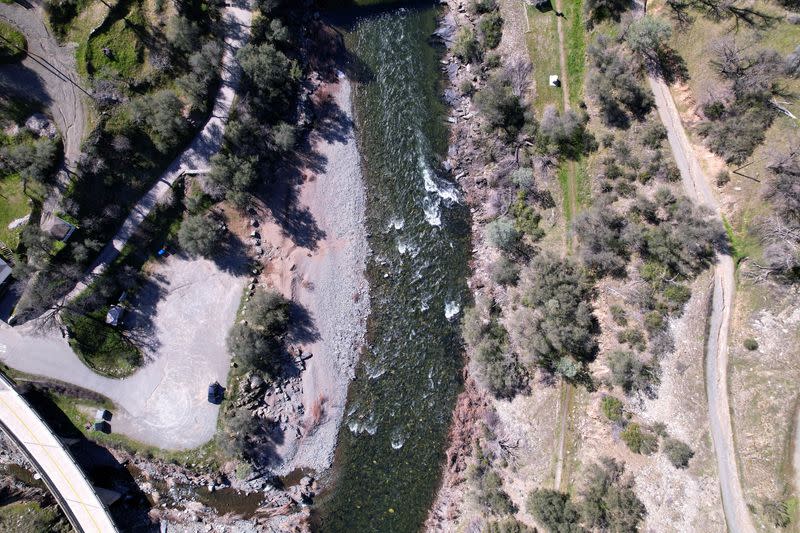Extreme Yosemite rain eases drought but disrupts wildlife habitats
By Cath Turner
YOSEMITE NATIONAL PARK, California (Reuters) - After a winter of epic storms in California, Yosemite National Park's famous waterfalls are in full flow, its reservoirs are brimming, and the snowpack in the surrounding Sierra Nevada Mountains is well above average.
In drought-stricken California, that is cause for celebration, but wildlife experts warn that weather extremes driven by climate change can also change habitats too quickly for wildlife to adapt.
"These extremes really take a toll on both the landscape, the wildlife and us," Beth Pratt, California regional director for the National Wildlife Federation, told Reuters.
Pratt has been studying Yosemite Valley wildlife for 25 years, including the more than 400 species of vertebrates that call the 1,200 square-mile (3,100 square-kilometer) park home.
One of the smaller residents Pratt surveys is the native California Newt, a small orange salamander with rough, grainy skin. In 2022, Pratt was concerned that low water levels in the Merced River, which flows through the park, would dry up seasonal ponds where the newts lay their eggs. This year, that concern has been washed away - she spotted some newts on a recent visit.
However, after a spate of deadly "atmospheric river" storms that unleashed widespread flooding, triggered mudslides and killed at least 20 people, her worry is that too much water is disrupting their ecosystem.
"When you have a six-week period where they're happening daily, the wildlife can't shift their habitat that quickly," she said. The storms also will not end California's historic drought as virtually none of the storms reached the key Colorado River basin.
In his 27 years as a Yosemite park ranger, Scott Gediman has never seen so much winter snow and water in the park.
As well as delighting Yosemite visitors with thundering waterfalls, the deluge led to a bumper snowpack in the Sierra Nevada mountains, sometimes referred to as California's "frozen reservoir."
According to a California Department of Water Resources manual survey conducted on Feb. 1, statewide snowpack was almost double the average for the time of year. The snowpack supplies around 30% of California's water needs.
"We kind of look at it like a bank," Gediman said. "You bank all the snow up in the high country and then in the warm weather, the water comes down."
But climate change means climate extremes, and as California experiences more severe droughts and heat waves, its occasional wet years are expected to be excessively rainy.
"Climate change isn't something we're waiting for," Pratt said. "We're experiencing it here, especially in the Sierra Nevada in California, we're ground zero, just because of our Mediterranean climate."
Mediterranean climates with rainy winters and dry, hot summers are particularly vulnerable to climate change.
"We don't want people to come to Yosemite and not see Yosemite Falls in future years because we have no snowpack because of climate change," Pratt said. "We want to preserve these places for both ourselves and the future. And climate is slowly destroying even the best protected places on the planet."
(Reporting by Cath Turner and Nathan Frandino in Yosemite National Park; Writing by Josie Kao; Editing by Rosalba O'Brien)


